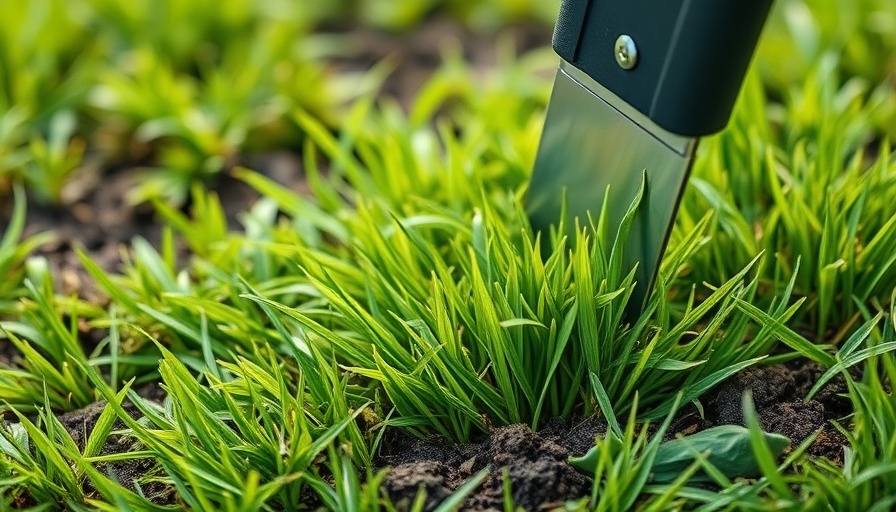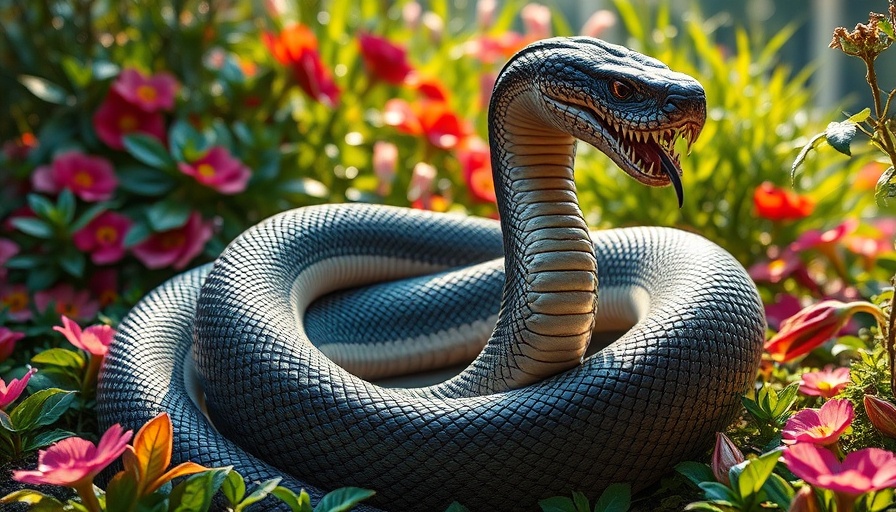
The Power of Nasturtium: A Multifunctional Gem in Your Garden
Nasturtium stands out as a valuable addition to any vegetable garden, especially for homeowners and small commercial property owners who are keen on maintaining beautiful and functional outdoor spaces. This vibrant annual plant not only adds a splash of color but also plays a crucial role in pest management and attracting beneficial insects. By effectively integrating nasturtium, garden enthusiasts can enhance both aesthetic appeal and ecological balance, creating an environment that thrives throughout seasonally intense climates like Michigan.
Understanding the Benefits of Nasturtium
Often lauded for its garden utility, nasturtium is scientifically classified under the Tropaeolum genus and is adapted to various growing conditions. One of its significant advantages is acting as a trap crop. By planting nasturtium near vegetables like cabbage, broccoli, and kale, gardeners can divert pests like aphids away from their prized plants, reducing the need for chemical pesticides and promoting a healthier garden ecosystem. This self-contained method of pest control not only protects crops but also fosters a vibrant microhabitat for beneficial insects such as bees and butterflies, enhancing overall pollination.
Placement Tips for Maximized Benefits
For optimal results, it’s important to know where to plant nasturtium in your garden. Place these flowers in full sun, ensuring they receive at least 6-8 hours of sunlight each day. Homeowners looking to improve the appearance and functionality of their outdoor spaces should consider situating nasturtium along garden edges or in poorer soil areas. This placement capitalizes on its resilience in less fertile conditions, allowing the plant to flourish and attract beneficial insects while drawing away harmful ones. To encourage healthy growth, maintaining spacing between bush varieties of about 12 inches and 18-24 inches for trailing types is essential.
Planting Techniques for Success
Direct sowing year after year is your best bet for success, particularly after the last frost of the season. Nasturtium roots are sensitive; therefore, they do not respond well to transplantation from pots. Enhancing your garden with these attractive plants not only keeps it visually captivating but also encourages more flowers rather than foliage, enriching its overall aesthetics.
The Culinary Value of Nasturtium
This plant is not just beautiful—its leaves, flowers, and immature seedpods are entirely edible, offering a delightful peppery flavor that can elevate salads and dishes. For those who may view nasturtium simply as a decorative plant, the culinary versatility of this garden marvel might come as a pleasant surprise, making it even more indispensable within the backdrop of your vegetable garden.
Harnessing the Power of Nature
Integrating nasturtium into your vegetable garden isn’t just about pest control; it’s about fostering a community of growth. Gardeners can celebrate this synergy by recognizing the vital role that plants play in supporting one another. Nasturtium brings a balance to the ecosystem, inviting a myriad of pollinators while fortifying your crops against destructive pests.
Next Steps for Garden Enthusiasts
As you plan your next gardening venture, consider the profound impact of planting nasturtium. Its vibrant colors, utility in pest control, and edible components blur the lines between ornamental and functional gardening. For homeowners and small commercial property owners invested in seasonal lawn care and landscaping, these flowers enrich garden experiences while simplifying the maintenance of outdoor environments across the year.
By embracing nasturtium, you’ll not only beautify your garden but also actively participate in its health and sustainability. Whether you are a seasoned gardener or just beginning, apply these principles to cultivate a haven that reflects your values and enhances the landscape of your property.
 Add Row
Add Row 
 Add
Add 


 Add Row
Add Row  Add
Add 
Write A Comment